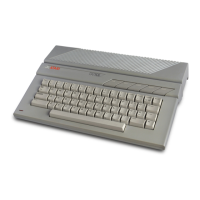Sometimes the delay loop
is
sandwiched
on
the same program line:
NEW
.10
FOR
DELAV=.1
TO
300:
NEXT
DELAV
LIST
RUN
Sample
Programs
The programs below use FOR-NEXT loops
in
a variety of ways. The
first program uses the FOR-NEXT
loop
as
a simple delay loop to leave
the word H I
on
the screen long enough to
be
read before line
30
clears the screen:
NEW
.1
REM
***
DLAVLOOP
***
5
PRINT
"
'"
"
.10
PRINT
"HI"
20
FOR
DELAV=.1
TO
800:
NEXT
DELAV
30
PRINT"
"'''
40
PRINT"
BVE"
50
FOR
DELAV=.1
TO
800:
NEXT
DELAV
T
he
next program uses a numeric variable
in
the FOR-NEXT loop.
It
also uses a TRAP command that refers the computer back to the
previous
line, giving no specific message about the error:
NEW
.1
REM
***
HOWHIGH?
***
.10
DIM
A$
(.1)
..
HH$(.1)
20
PRINT"
'"
"
30
PRINT:
PRINT
"HOW
HIGH
DO
YOU
WANT
TO
COUNT"
,:
40
TRAP
30
50
INPUT
HH
55
HH$=STR$(HH):
IF
HH$="O"
THEN
GO
TO
30
60
FOR
COUNT=.1
TO
HH
70
PRINT
COUNT
80
NEXT
COUNT
~O
PRINT
:
PRINT"
PLEASE
ANSWER
(V
/N)
,
WOULD
YOU
LIKE
TO
COUNT
AGAIN"
;
.100
TRAP
~O
.1.10
INPUT
A$
.120
IF
A$="
V"
THEN
GOTO
30
.130
IF
A$="
N"
THEN
PRINT:
PRINT"
BVE"
:
END
.140
GOTO
~O
The last program paraphrases
an
old rock 'n' roll song and uses
"nested"
FOR-NE
XT
loops. A nested FOR-NEXT loop
is
a sma
ll
er
delay loop inside a la
rg
er FOR-NEXT loop. The program also uses
OR
to
create multiple conditions
in
the I
F-TH
EN
statement:
62

